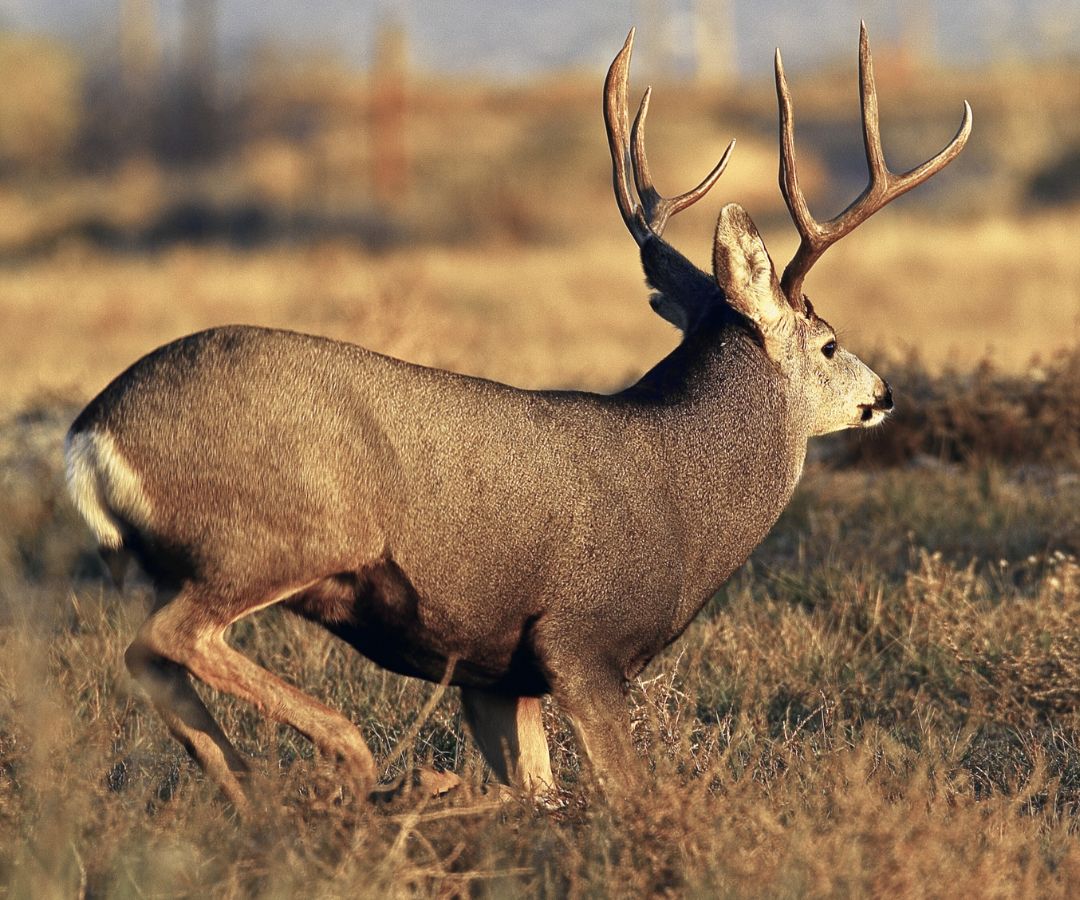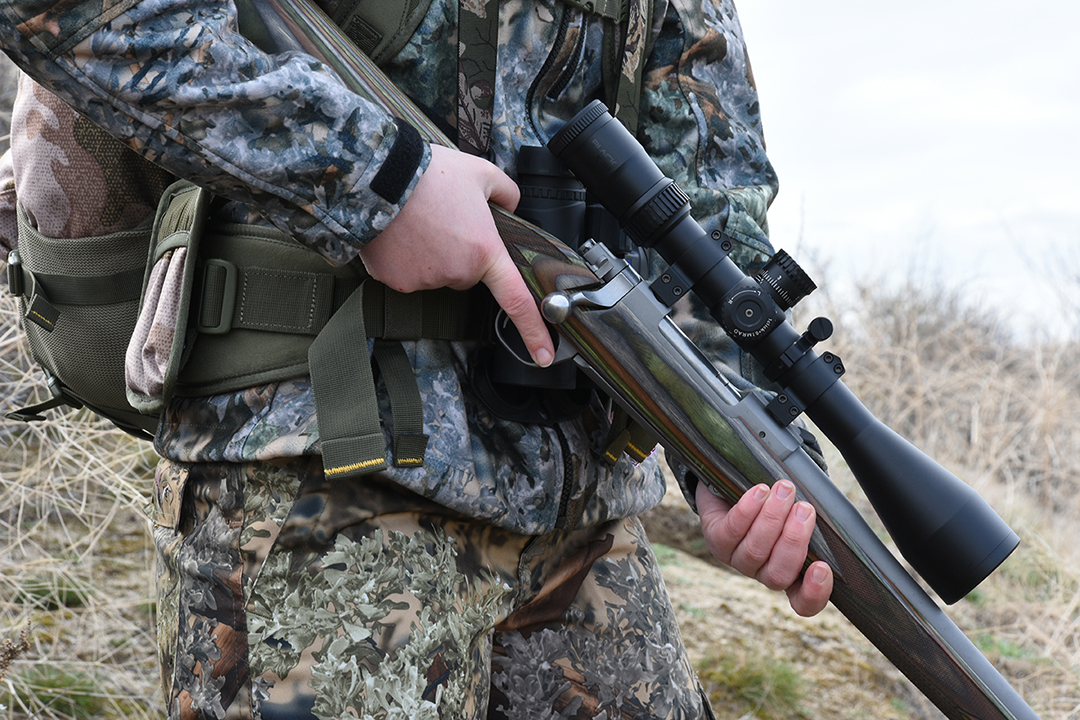It's the last day of your hunt. You have not seen anything yet. You get up early in the morning, hike in while it's still dark, and sit at the edge of a clearing to wait for the sun to come up, hoping to see an elusive buck deer standing on the edge of the tree line. You are enjoying nature, breathing in the fresh air, relaxing, and enjoying the scenery, but you don't see a buck, so you decide to head back to camp.
As you walk back to camp with your mind on a cup of coffee, eggs and bacon you see 75 yards in front of you, the biggest buck you have ever seen just standing there looking at you. At that moment, you go from 0 to 60 in just a second. Your body fills with adrenaline and excitement. You throw up your rifle and fire a shot and miss. UGH!!!!
It takes off running into the brush. You know you have good gear; your sights are dead on, and you think, "What the!!! just happened." You, my friend, may have just experienced buck fever.

What is Buck Fever?
When you have buck fever, fight-or-flight kicks in. It's a normal reaction, a sign that your body is preparing for action. The problem is that when your body is hit with that sudden burst of excitement, physical reflexes take over, and sometimes, the body reacts faster than the brain processes and misses a step or exaggerates an action. It's like when you see something about to fall on you, and without thinking, you move out of the way. That is a single reflex action. To shoot a deer, a series of actions must take place for success.
When you see the deer in your scope, do you see where your crosshairs need to be? Are you taking careful aim, breathing, squeezing the trigger, and following through, or jerking the trigger as soon as you see the deer in the scope?
Somewhere in that excitement, there is a disconnect, and a step in the shooting process is left out. But remember, you have the power to stay calm and focused. The interesting thing is, in most cases, there was plenty of time to focus on taking a good shot. Focus on making a good shot, not the deer itself. If your mind is on the deer, you are excited, afraid it's going to get away, and you feel an urgency rather than running through the steps of making a good shot.
How to Prevent Buck Fever
The key is to concentrate on the shot, not the deer. At the moment you see the deer, it's just a target. Take a breath. Is there a safe backstop? If yes, calculate the range and, if possible, get into a better shooting position. Now, aim and breathe and focus on where the center of your reticle is. Aim small; don't just aim at the deer. Aim specifically for a small spot on the deer, like the heart, but not just the heart, the center of the heart; breathe in and breathe out, hold and squeeze the trigger, and follow through.
Wow, that's a lot to think about in a couple of seconds while a trophy buck deer is just standing there staring at you! No wonder a disconnect happens somewhere and a step is skipped. This is why you need to practice.
This may sound a little silly, but while target practicing, if it is safe to do so, set your rifle down with the muzzle pointed safely down range and set a timer for random times, like 30 or 40 seconds. Then, do some jumping jacks to get the heart rate up. You can skip the jumping jacks if you can't do them, but it does help to simulate the rapid heart rate experienced with a rush of adrenaline.
When the timer goes off, go through the shooting process as though you just spotted a deer.
- Imagine seeing a deer.
- Acknowledge Safe backdrop.
- Get into a shooting position.
- Chamber a round or snap cap.
- Estimate and compensate for range * if that is common to the hunting you do; otherwise, skip this step.
- Focus on the center of the reticle and where it is aiming.
- Breath- use the breathing technique that works best for you. There are a few. One, it is to take a deep breath and hold it just before you
- Squeeze the trigger.
- Exhale slowly as you follow through.
To practice follow-through, keep finger tension on the trigger until after the recoil happens.
Do it over and over, changing the shooting position each time. Don't rush! It is not a race. It should become a smooth flow of actions. You might be surprised how little time it takes to do this as a flow. The more you practice, the more natural it will become. Do it enough, and the series of actions will become like a single reflex action.
If you cannot practice this at a range, you may be able to dry-fire practice it in the woods somewhere safe, with the muzzle pointed towards a safe backstop with snap caps between hunts or while scouting. Never simulate recoil when dry firing.
Competition Shooting Can Help Cure Buck Fever.
You don't have to be a pro to compete in competition shooting. Most outdoor ranges host competitions that are open to the public. By competing in speed competitions, there is a level of stress when the buzzer goes off that is not as intense but similar to spotting a deer. You are in a race for speed, but you must hit the targets to win. Starting with something like Rimfire Challenge, as it is a low investment and is very beginner-friendly may be a good way to help cure buck fever.
The Importance of Gear You Can Trust.
Eliminate doubt. It is very important to ensure you have trustworthy gear—a reliable accurate rifle, a reliable scope, and reliable scope mounts like those from Warne—that you can confidently use. Jack Warne, the founder of Warne, knew the importance of removing doubts about gear and designed a better ring that held the scope on zero better that other scope mounts shot after shot.

Buck fever can be frustrating and disappointing for hunters. However, it can be prevented with practice, proper breathing techniques, focus, and quality gear. So, get out there, enjoy the hunt, and stay calm and confident. You got this! Confidence in every shot!
If you are shopping for top-quality US-made scope mounts, Shop Warne!


